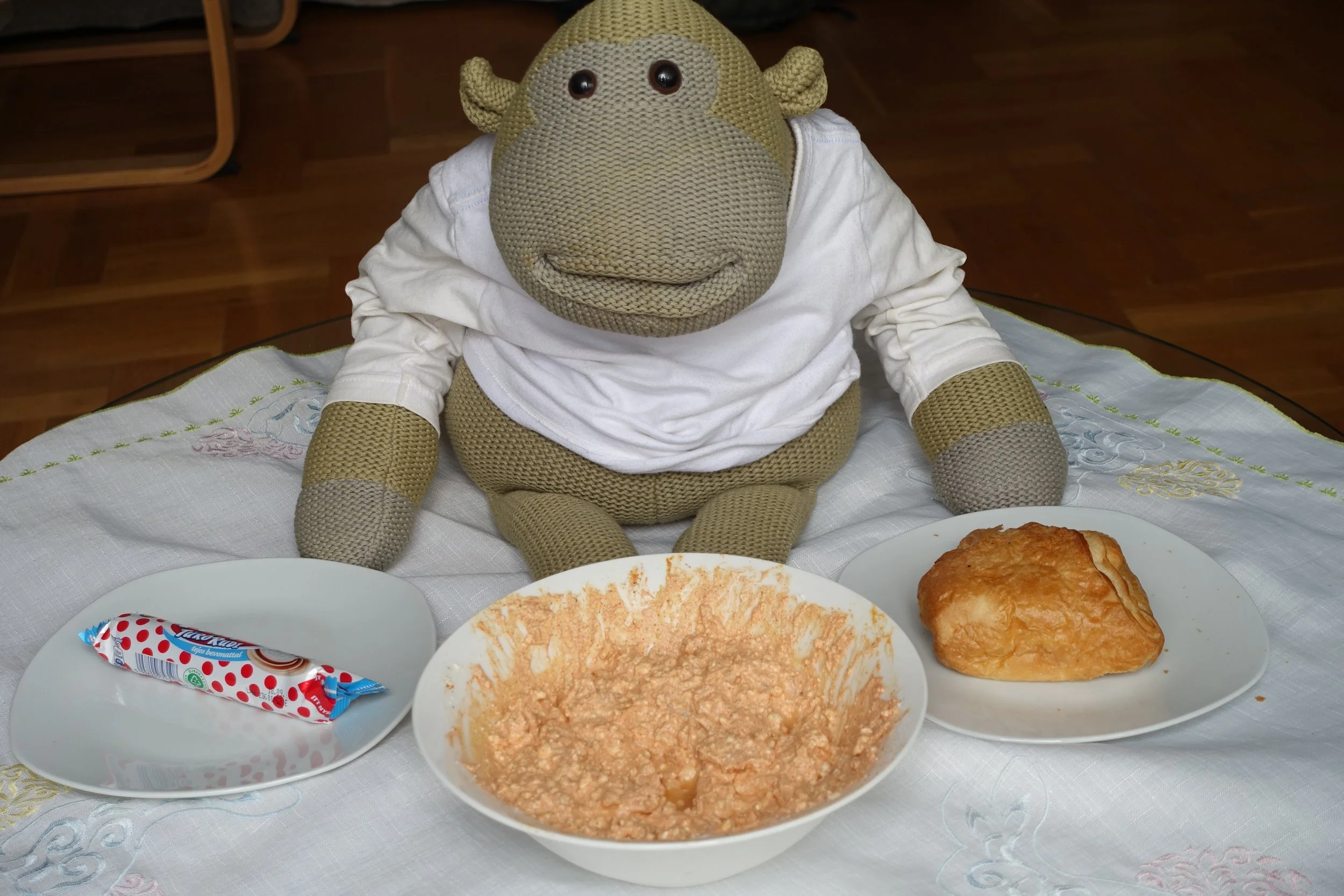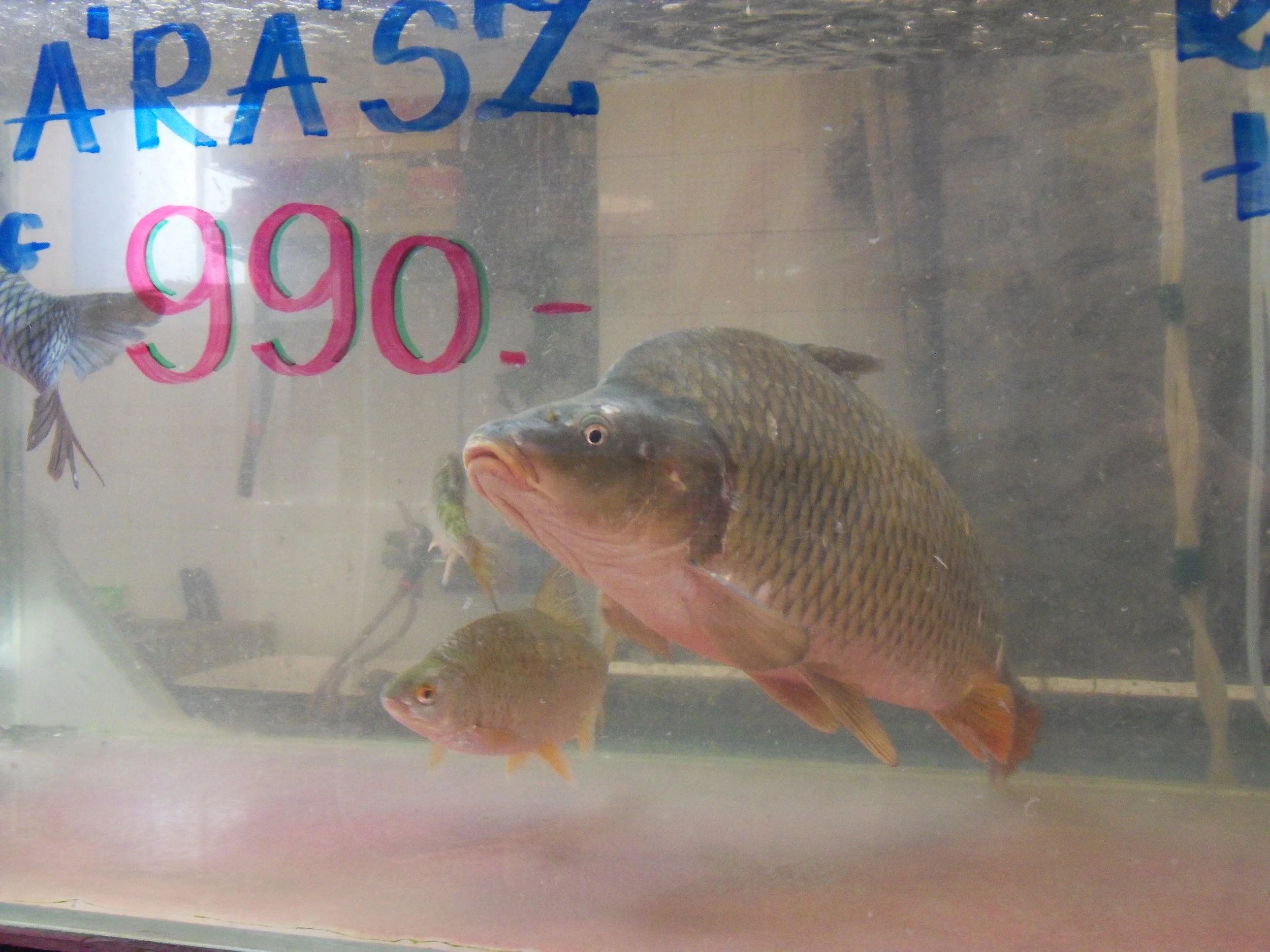A nation of foodies
Hungarian tomatoes for sale
There is a jokey expression in Hungarian- ‘tömi a majmot’- which literally translates as ‘stuffing the monkey’- meaning to eat a lot or eating greedily. To stuff myself with sweets and eat to live was very much my experience of food while growing up in Luton. The then prosperous industrial town ran more on canteen grub and the Greasy Spoon than niceties around dining. Fish on Fridays, the inevitable Sunday roast and two veg, pork pies, sausage rolls and piccalilli. This was the standard fare. My dad thought the smell of garlic cooking was the devil’s own work, although if you slipped some into his dinner he consumed it with relish. Visits to the UK now suggest beyond-industrial Britain has fresh and varied food available, although only for those who can afford it. Whether the British ‘live to eat’ these days as the French were always alleged to do, is a moot point. There are those who spend twelve hours slow cooking pulled pork in a Big Green Egg barbecue, while others live happily off Deliveroo or scoff sandwiches from W.H. Smith for their dinner. In truth, it’s a question a Lutonian Abroad no longer feels qualified to comment on. Answers on a postcard, if such things still exist, dear readers.
What of the hungry Hungarians? Are they consuming for fuel or flavour? First thoughts-. do not come between a Hungarian and his or her lunch. I taught a former emigrant to Holland, who had returned to Budapest simply because he couldn’t get a proper two-course midday repast. According to him, the Dutch only eat cold sandwiches and he simply couldn’t get through the working day without proper sustenance. Hungary is a foodie nation in hiding. A secret little Italy of regional specialities and obsessive consumption. Like most countries the diet was developed to sustain a largely rural existence, taking advantage of local produce and not importing much from elsewhere. With the huge expanse of the Great Plain and its rich soil, Hungary was nicknamed ‘the pantry of the Habsburg empire’. As well as grains and vegetables, cattle and pigs, the baking hot summers ensure a ready supply of fruits. Peaches, plums and apricots are very good here. Except for those enjoyed in Greece, the water melons are the best I’ve encountered. Strawberries come early and rival those from Blighty. Pears are always good. Only apples are a disappointment- rarely reaching the unique blend of sweetness and acid prevailing in Britain. Yes, I remember plenty of watery specimens on UK supermarket shelves too.
Lunchtime canteen in Buda
The Soviet period saw an asserted effort to grow a Magyar orange outdoors. But the, then, brutal climate destroyed the spring blossom so that the results didn’t prove socialist farming techniques were superior to capitalist measures. In ‘ A tanú’ (The Witness), a hilarious Hungarian movie from 1969 satirising the Stalinist years, the disastrous efforts to cultivate a Hungarian orange, features as a plot line. Times change: the south of Hungary saw continuous days over 40 degrees Celsius this summer and winter adjacent to the Balkan states becomes milder every year. Maybe the Hungarian orange will become a reality in years to come? Whether it could survive and rival the fantastic vitamin C count of the popular Hungarian zöldpaprika (green pepper which is actually yellow!) remains to be seen. There are precedents for change. In the last decade farmers have started to grow sweet potatoes for the first time and the climate suits them perfectly. They have become a staple on supermarket shelves and as fast-food fries.
Actually, the range of produce is more limited than that offered in Britain with its vast post-colonial and post-EU food trails. My gut feeling, excuse the pun, is that a greater range of fruit and vegetables could be grown here than currently offered. It may be the limited imagination of producers or the conservative taste of Hungarian consumers or both, which prevents it happening. In terms of experimenting with foreign cuisine in restaurants, Hungarians are certainly open minded. Thai, Korean and Vietnamese restaurants grow in number every year. Cuban, Georgian and Ukrainian eateries are to be found in the capital.
What Hungarians want most from their own kitchens are traditional dishes made from local food stuffs and many will search around to achieve that. Rarely will shoppers accept the supermarket offering, if they know the local market offers a tastier alternative of the same vegetable. Or vice-versa. In Budapest people travel great distances around the city shops and markets, knowing where they will find the finest of a particular product and are quite willing to queue for the opportunity. Taking advantage of seasonal freshness is also commonplace here. When wild garlic appears in the market places in early spring, bakery pogácsa (savoury scones) are laced with their mild aroma. In the autumn, sweet, cloudy ‘must’ becomes available as a by -product of the grape harvest. Delicious pumpkin soup enriched with oil and seeds from the same type of squash, becomes a mainstay on restaurant menus as the cooler days commence. A wide range of wild mushrooms are offered in market places, as is the opportunity to take your own picked specimens to be checked by an expert as suitable for consumption.
Hungaricums are things or phenomenon that are unique to Hungary. The local cottage cheese, túró, meets this classification. Made citrusy sweet with lemon juice and honey it becomes added to many bakery products and forms the basis of chilled chocolate bars like the Túró Rudi. Túró can also be mixed with paprika, onion, sour cream and caraway seed to produce Körözött- a tasty cheese spread. Túrós csusza sees the cottage cheese added to small amounts of fried bacon and served ‘dry’ over square shaped pasta in a salty-sweet concoction that works surprisingly well. Lecsó is a kind of Hungarian ratatouille served with rice or pearls of the egg-based noodle- tarhonya. A tasty sausage complements the dish perfectly.
British monkey weighing up his cottage cheese options. Will he be completely stuffed afterwards?
Hungarian cuisine is somewhat heavy on meat dishes. Garlic, onion, paprika and sour cream are mostly added to create the national savoury flavour. But it would be a mistake to see Hungarian food as what we know of it from home. For example, goulash (gulyás) in Hungary is a spicy soup with lots of sour cream and pork. Traditionally it was cooked outdoor in a bogrács (metal cauldron) over the fire. What is eaten in other countries as goulash is classified as pörkölt here-pork or beef stew.
Certainly, Hungarians enjoy their chicken paprikas at home (just about the only native dish I can actually cook!) but they will also feast on a range of local vegetarian specialities as well. Főzelék (vegetables in a thick sauce) dishes are quick, cheap lunchtime options. I particularly enjoy lentil, squash and tomato variations. The green pea and green bean főzelék seem to me as only useful as a way of overcooking vegetables. In fact, the Hungarians rarely eat boiled or steamed vegetables as they come, preferring to batter every bit of greenery in sight. If not battered then the preference is to cover them in a flavoured sauce. The humble cauliflower is stewed with paprika, sour cream and caraway. There is even a lunchtime favourite called krumplis tészta, which is pasta served with potato. Great if you’re herding cattle on the Great Plain but less necessary for office workers.
They don’t like dull and healthy fare here. Flavour is everything: the spice of life. There are undoubtedly home cooks who try and eat healthier and restaurants that offer lighter Hungarian dishes, but generally the rule is that food should taste good and be served in copious quantities. It’s hard to argue with that until the waistline expands and cholesterol gathers unwanted. A serious offender is the Lángos-- a huge deep-fried flatbread that tastes like a savoury donut and is frequently eaten between meals. Excellent with beer, locals only consume them with sour cream and garlic or grated cheese if pushing the boat out. This excellent, cheap street food has returned to popularity in the capital but with meats often added in touristy spots to raise the price. Locals turn their nose up at this, in much the same fashion as when Italians are offered a chicken tikka masala pizza in the UK.
Lángos ready for the sour cream, garlic and grated cheese to be added
Little lamb is eaten here and not so much beef. Instead, tonnes of pork as well as rabbit, venison, chicken and duck. In fancy restaurants you will be served some splendid fruity sauces to accompany your carnivorous desires. There seems to be a French influence at play- probably something to do with Napolean’s efforts to subjugate the Habsburg dynasty. The local cuisine accurately reflects the countries position at the heart of Europe. Kebabs and similar have drifted in from the Balkans. Italian food can be top notch; sauerkraut style cabbage from Germany is a staple. Even Fish & Chips are becoming more available with Hake as the preferred saltwater fillet in the middle. Many Hungarians love their freshwater stocks- the humble carp at Christmas, blubbery catfish and delicious zander. Roach, Crucian carp, chub and barbel are also eaten when available. For me the fogás (zander) is the best fresh water fish available here bar imported trout and salmon.
Crucian carp waiting to be sold
Offal also remains popular and there aren’t many internal organs or parts left uneaten. Tripe stew with its rubbery texture is a lunchtime favourite I choose to avoid. Fried pig’s brains are apparently an acquired taste. Bone marrow I have consumed once and live to tell the tale. Chicken livers are really quite delicious served in a typically spicy sauce. Crunchy, cockerel testicle stew is consumed in rural parts where nothing is wasted from the animal when slaughtered. Drained pig blood becomes the base of hurka sausages, which are reminiscent of black pudding. Each year there are famous sausage festivals and huge rivalry lingers between Gyula and Békéscsaba as to which produces the best specimens in the country. Only ten miles separate the rival cities yet each offers a distinctive sausage taste. And they’re not the only regions to produce a tasty banger. If you look closely there are many local specialities to be found in terms of meat, bread and cheese. Some are influenced by the nationalities of the earlier Greater Hungary- with Serbian, Slovakian and Transylvanian tastes to be discovered. Arguments rage over whether cities on the Danube or Tisza rivers produce the best Halászlé -a powerful fish soup not for the faint hearted.
Expensive Mangalica pork sausages for sale.
Soups are mostly excellent, ranging from the clear broth of a ‘bone soup’ through to the Tuscan like Jókai bableves (bean based). Not to forget the unique taste of cold fruit soups that I sometimes save and eat as a desert, such a Brit that I remain. Often, it’s difficult to leave space after soup and main course for the deserts but they come highly recommended. I love the poppy seed and egg mixture that makes up Mákos Guba. If you simply want some cake with your afternoon tea or coffee, then don’t despair. You could select the cake of the year, declared each August, or opt for one of the standard local specialities. As in many things, Budapest rivals Vienna in claiming to offer the best in Europe and with cakes they may even surpass their once masters. From the fruity Jewish style of the Flódni through to the chocolate and apricot of the Zserbó slice, you can’t go far wrong in a good Hungarian café. And there are plenty of those to choose from.
One senses that the Hungarian spirit is still rural: Budapest only an urban necessity. There is a huge exodus every weekend back to the places where most Hungarians come from. My impression is that the Magyars are still huddled together on an imaginary puszta, watching the bogrács simmer on the fire. One eye on the bubbling gulyás, one eye on the flat plain watching out for foreign invaders. Ottomans, Habsburgs and Soviets have all appeared on that horizon. For some Magyars of today it’s Tartars from Brussels, who must be stopped now before they infiltrate the nation with their dubious ‘western’ sauces. Others across the political divide are more concerned about the influence of Mr Putin’s jackboot borscht or the chop suey economics of Xi Jinping capturing the nation.
Open to trying any and every world cuisine offered in the capital, the Magyars still want to cook their own recipes at home. Anything less than the best versions are simply not worth eating. Despite being at the centre of the continent, Hungary is a foodie nation with its own unique cuisine and associated culture. Yes, although they ‘stuff the monkey’ no more than Brits or others, the Hungarians live to eat.





